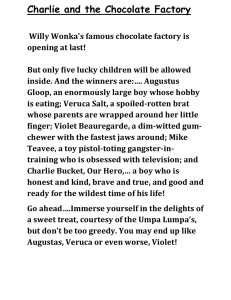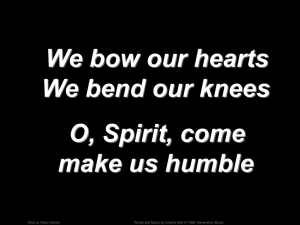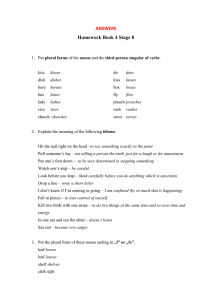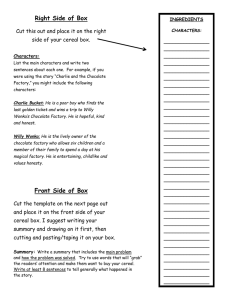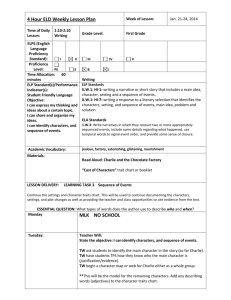Title of Book: Charlie and the Chocolate Factory Author:
advertisement
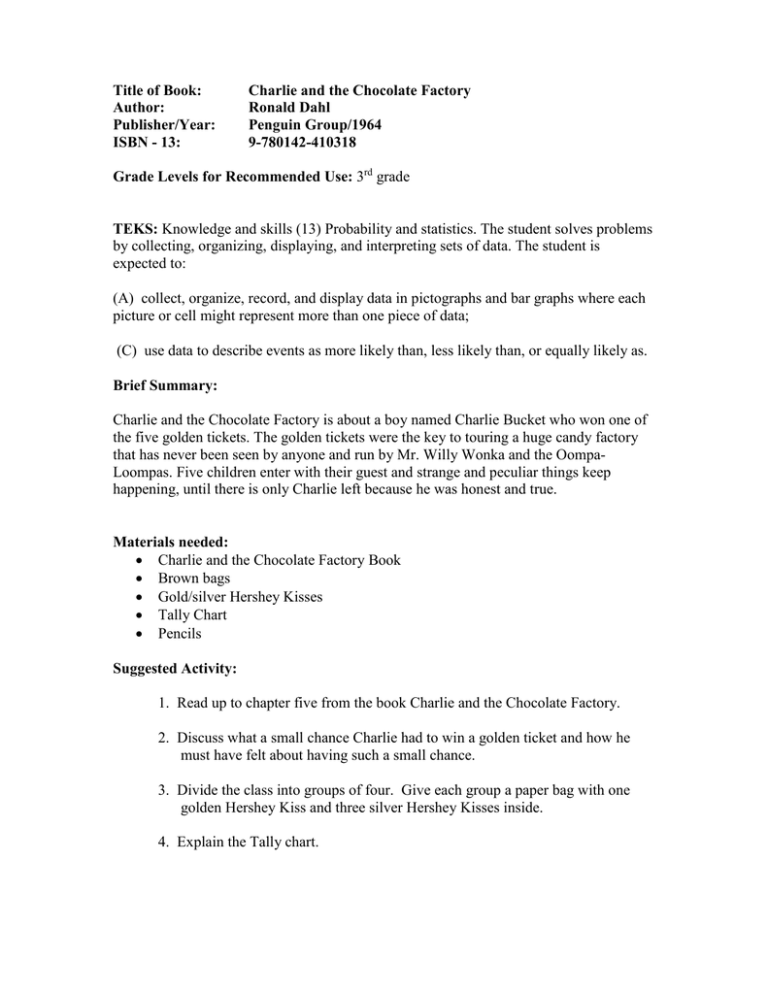
Title of Book: Author: Publisher/Year: ISBN - 13: Charlie and the Chocolate Factory Ronald Dahl Penguin Group/1964 9-780142-410318 Grade Levels for Recommended Use: 3rd grade TEKS: Knowledge and skills (13) Probability and statistics. The student solves problems by collecting, organizing, displaying, and interpreting sets of data. The student is expected to: (A) collect, organize, record, and display data in pictographs and bar graphs where each picture or cell might represent more than one piece of data; (C) use data to describe events as more likely than, less likely than, or equally likely as. Brief Summary: Charlie and the Chocolate Factory is about a boy named Charlie Bucket who won one of the five golden tickets. The golden tickets were the key to touring a huge candy factory that has never been seen by anyone and run by Mr. Willy Wonka and the OompaLoompas. Five children enter with their guest and strange and peculiar things keep happening, until there is only Charlie left because he was honest and true. Materials needed: Charlie and the Chocolate Factory Book Brown bags Gold/silver Hershey Kisses Tally Chart Pencils Suggested Activity: 1. Read up to chapter five from the book Charlie and the Chocolate Factory. 2. Discuss what a small chance Charlie had to win a golden ticket and how he must have felt about having such a small chance. 3. Divide the class into groups of four. Give each group a paper bag with one golden Hershey Kiss and three silver Hershey Kisses inside. 4. Explain the Tally chart. 5. Instruct each group to take turns drawing a kiss out of the bag without looking. Record the color on their data chart, and then return the kiss to the bag. Each person will draw five times (total of 20 draws). Make sure the Kisses are returned to the bag after each draw and shake the bag before the next draw. 6. After ten drawings, have the students stop and make predictions about the number of silver Kisses, the number of gold Kisses, and the total number of Kisses. 7. Instruct the groups to record their results in a bar graph or pictograph to be shared with the class. Have the students answer these questions about their experiment: What color Kiss were you more likely to draw? What color Kiss were you least likely to draw? How many gold or silver Kisses need to be added to make your chances equal? Graph your results in a pictograph, circle graph, or bar graph. References: http://www.athens.edu/vinsobm/lesson_10.htm http://www.youtube.com/watch?v=l4mzP2dLv0w&NR=1 Adapted by: Valerie Dykes (2011) Charlie and the Chocolate Factory Tally Chart Prediction: How many Silver? Write down tally marks for each draw Experiment One How many Gold? Total in the bag? Experiment Two Experiment Three Silver Gold Charlie and the Chocolate Factory Pictograph Experiment 1 Experiment 2 Experiment 3 Each Kiss = 2 Each Kiss = 2 Each Kiss = 2 Silver Gold
